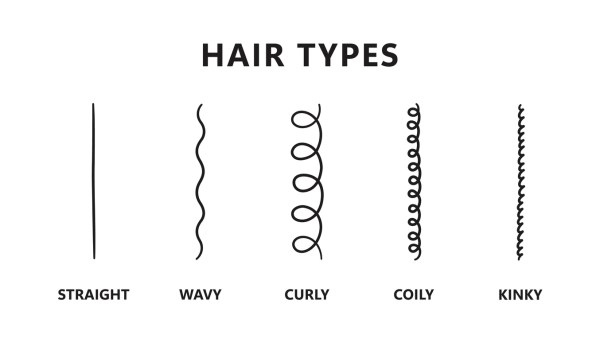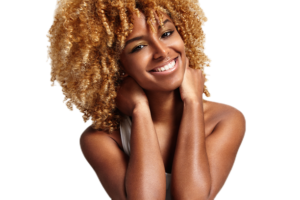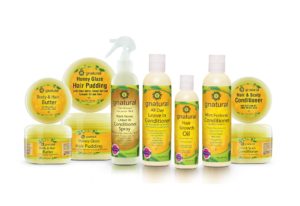Your hair is as distinctive as you might be, and understanding your hair kind, curl sample, subtype and the opposite parts of your hair kind could be the step one of understanding your distinctive head of hair.
Most People Get Their Hair Type Wrong
Hair Typing is a system of classifying hair created by Andre Walker it contains of curl sample, hair texture, density, and porosity.
Most solely give attention to the ABCs and 123s of the hair classification system which solely describes the bodily look of hair or curly kind and its subtype. You know… I’m 4b/4c for instance.
But there are some stuff you take into account on the subject of your hair kind:
1.) One head of hair can have a number of hair sorts. You might have observed that your curl sample is looser within the entrance. Or possibly it’s tighter within the crown or middle of your head. This actually isn’t unusual. Many individuals have observed the variations of their hair.
2.) Knowing your curl sample can go away you at nighttime about your hair’s wants and bodily make-up or composition. Honestly, it doesn’t present any details about your hair’s bodily make-up. In addition to curve sample, figuring out your hair’s texture, density, and porosity will present a colourful view of the distinctiveness of your head of hair.
Curly hair is very advanced. No two heads of hair are alike. In truth, hairs on one head might not act alike. That is what makes us distinctive. But that additionally generally is a problem to completely perceive our hair. Hair has varied curl patterns (3C, 4A, and so forth.), textures, density, porosity and elasticity. It could appear very difficult, however right here is the breakdown:
Defining Hair Types
Hair Type consists of those 5 parts:
- Curl Pattern
- Texture
- Density
- Porosity
- Elasticity
Curl Pattern or Curl Type
The is the commonest system used to explain curl sample.
The hair typing system is useful in understanding how your hair might look when you copy a selected fashion. You may also infer that hair that is kinkier can be drier, as a result of the tighter curl sample makes it harder for pure hair sebum to achieve the ends of the hair. You shouldn’t infer that kinkier hair is stronger. This is false.
Hair sorts are sometimes categorized into 4 main classes or curl patterns: straight, wavy, curly, and coily.
Each of those classes could be additional divided into subtypes of a, b, or c.
Here’s a quick overview of every curl sample:
- Straight Hair (Type 1): This hair kind is typically easy and straight, missing a noticeable curl or wave.
- Wavy Hair (Type 2): Hair with a delicate “S” form or unfastened waves falls into this class. It’s typically straightforward to fashion.
- Curly Hair (Type 3): Curly hair options well-defined curls or ringlets, from unfastened to tight spirals.
- Coily Hair (Type 4): This hair kind has tight, springy curls or coils that vary from high-quality to coarse.
The Subtype of Curl Pattern
You subtype describes the biggest distance of your curls or the diameter of your curl, kink, or coil.
A: Well-defined curls or spirals.
B: Looser, much less outlined curls.
C: Very tight, small curls or coils.
In addition to curve sample, right here’s a breakdown of the opposite three parts of the hair kind system: texture, density, and porosity.
Texture
Hair Texture refers back to the thickness or diameter of the hair strand. Your hair could be high-quality, medium (regular), or thick (coarse). Fine hair is delicate –with much less protein construction — and doesn’t maintain curls nicely. Fine hair is extra vulnerable to breakage, particularly if it is additionally vulnerable to dryness. Medium (regular) has extra protein construction than high-quality hair, but it surely is extra pliable than coarse hair. Coarse hair is a thicker hair strand, that holds curls nicely, but it surely is much less pliable than high-quality or medium hair.
Density
Density refers back to the variety of strands in your head. Those with low-density hair usually tend to have points with scalpy twists. High density means you’ve numerous hair strands. When you check with somebody’s hair as “thick”, it is usually in reference to density.
Porosity
Porosity refers to how your hair strands retain moisture. If you might be having points moisturizing your hair, this is an important idea to know. Low porosity hair makes it troublesome to get moisture into the hair. Normal (Medium) porosity hair is pretty straightforward to get moisture into the hair shaft and retain that moisture. High porosity hair has a really troublesome time retaining moisture as a result of water enters and leaves the shaft simply. (NOTE: Overly porous hair is usually because of chemical and mechanical harm and is much more troublesome to moisturize.)
How to Test Your Hair Porosity
To check your hair porosity, place a shed hair in water and observe the information under. It is additionally vital to notice that hair porosity can change over time because of using chemical compounds, warmth, and age of hair.
Quick and Easy Guide to Porosity
Low Porosity = Closed Cuticle = Hair floats in water throughout hair porosity check = Difficult to get moisture into hair
Normal Porosity = Cuticle layer opens sufficient to permit moisture = Hair takes a very long time to sink = Easy to moisturize and retain that moisture
High Porosity = Raised cuticle layer = Hair shortly sinks to the underside = Absorbs water simply
Elasticity
Elasticity refers back to the “stretchiness” of your hair, which is how a lot your hair will stretch after which return to its regular state. If your hair is wholesome, when moist, it ought to stretch 50% or extra and return to its regular state. Unhealthy hair might solely stretch about 20% when moist. Hair that is not elastic is extra vulnerable to breakage. It is additionally more durable to curve with rollers or heat-styling instruments. To check for elasticity, pull strands from at the least 4 areas of your head. Determine how a lot it springs break, how shortly it springs break, and whether or not your hair breaks.
So there you’ve it! The easy breakdown of “hair typing”. As you possibly can see, it is rather more than 1, 2, 3, and A, B, C. [Sorry I couldn’t resist the rhyme.] It is additionally vital to notice, which you could have any mixture of those traits. (So though you assume your hair seems like “Ebony” once you watch her video… it’s not.)
Identifying Your Hair Type:

Determining your hair kind is a simple course of. After washing and permitting your hair to air dry, take an in depth take a look at your strands. Pay consideration to components like curl sample, thickness, and frizz.
You can use these observations to establish your hair kind and subtype.
Is your hair straight, wavy, curly, or kinky? Assign your hair the corresponding hair kind (Type 3 or Type 4). It’s value noting, that almost all Black ladies have curly (3) or kinky (4) hair in its pure or non-relaxed state.
To establish your subtype take a look at the diameter of your textured hair.
Note that you’re figuring out the dominant hair kind.
The Quick and Easy Curl Pattern Guide:
1 = Straight Hair
2 = Wavy Hair
3 = Curly Hair
A = Curl diameter of sidewalk chalk
B = Curl diameter of a sharpie
C = Curl diameter of a pencil
4 = Kinky Hair
A = Curl diameter of a needle
B = Zigzag curl sample
C = No curl sample
How Do You Use Your Hair Type
Now that you already know your hair kind, how do you place this info to make use of?
The best solution to clarify this is to make use of myself for example.
Like so many I used to be utterly confused and slightly overwhelmed once I first went pure. Everyone was throwing round phrases, merchandise I needed to attempt, and declaring curl sorts left and proper. Needless to say, I bought product after product…that didn’t work for my hair kind.
That is once I began to take the time to really perceive my hair. You can say I constructed a relationship with my hair. And not simply the Andre Walker Typing System, which is restricted in utility. I discovered about varied facets of hair typing so I may higher perceive moisturize and elegance my hair. And that is once I had my main breakthrough.
Related




